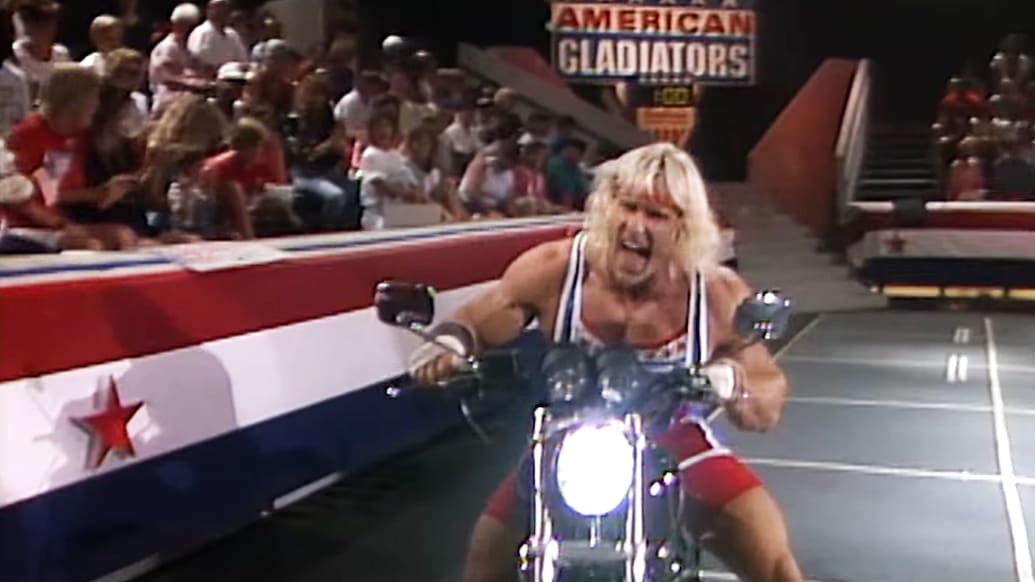Now every pop culture phenomenon gets an additional 15 minutes of fame thanks to a nostalgic nonfiction documentary. So perhaps it was inevitable that someone would turn their attention to: American GladiatorsThe influential TV series ran from 1989 to 1996 (and was briefly revived in 2008) and pitted the contenders against the giants in a variety of brutal athletic battles against David versus Goliath. Fortunately, that someone is director Benjamin Berman, as in 2019’s. The Great Johnathan DocumentaryIt transforms a traditional profile piece into a multi-layered and poignant examination of success, exploitation, betrayal, fraternity, and the devastating war that the pursuit of a cherished dream can bring.
Two-episode, the final episode of ESPN’s famous “30 by 30” series. american gladiators documentary (May 30) Through interviews with several of the remarkable men and women who have acted as Gladiators, the show begins as a simple revisit of the past, outlining its rise to stratospheric heights and its cancellation. The Gemini (Michael Horton), Malibu (Deron McBee), Elektra (Salina Bartunek) and Saber (Lynn “Red” Williams) candidly recount the dizzying experiences of celebrities in first-person while delving into father issues and gangland anger. and the party-hardcore frenzy that colored their time as millions fought for their viewing pleasure. Their colorful anecdotes give the material its humor and sadness; secondly, from personal tragedies, professional flare-ups, and countless injuries that have left them scarred and battered, and in the case of Thunder (William Smith), he is permanently crippled and deeply regrettable. .
main attraction American Gladiators Documentaryhowever, the shepherding manager is Johnny Ferraro. American Gladiators top. “I was looking for something to draw attention to,” admits Ferraro, a former Elvis impersonator and native of Erie, Pennsylvania. and “I wanted to build my own thing.” What he did was a movie about rugged blue-collar Americans who turn into superhero benefactors, and it took him to Hollywood, where he went on deaf ears for six years. But after watching My god! you devil and, promising to sell his own soul to the Devil in exchange for a great chance, he met an understanding producer. American Gladiators concept and wanted to make it a TV show. The moment he had been waiting for had arrived for Ferraro, and he caught it with delight.
Sitting in front of the cameras, Ferraro appears as a visionary, a salesman, and a cunning manipulator, determined to make the documentary follow his own script, as clipped from his phone conversations with Berman. This is most true when it comes to Dan Carr, who is credited as the co-creator of “Apache.” American Gladiators and yet it remains a complete mystery to most of the show’s cast. Ferraro and journalist Pat Cuneo explain that Carr is a burly brawler, champion arm wrestler, and “king of the Ironworks” syndicate in Erie. He also became Ferraro’s de facto nightclub bodyguard and close friend, and it was Carr who really came up with the idea. American GladiatorsIt was the result of the grueling Ironworks picnic competitions and was first publicly staged at a local gym on March 27, 1982.
Ferraro refuses to discuss why Carr disagreed American Gladiators Documentary It implies that under the surface an ugly secret is hidden. Likewise, there is a text note announcing Carr’s absence as Ferraro legally controls his friend’s appearance and forbids him from participating. With the same cunning he exhibits in traditional summarizing passages (as when) American GladiatorsBerman implies that Ferraro and Carr’s relationship is a microcosm of the American origin story in which a white man steals and profits. the (intellectual) property of a Native American. But at the same time he refuses to make his doctor a polemic; As it turns out, reality is complex and constantly evolving in surprising ways.

After alluding to Ferraro’s greed (which is the apparent reason why so many ex-Gladiators chose not to take part in the venture) and his backstabbing betrayal, American Gladiators Documentary He spends his back half trying to get as close to Carr as possible. In doing so, it delivers unexpected twists and comic irony – including the fact that: American Gladiators was born by a syndicate and was later used (with failed reboots in 1989 and 2008) as useful programming for networks struggling with writers strikes. From start to finish, Berman works like an expert juggler, so much so that the miniseries is equal parts loving memories, convoluted research, lively character study, historical research, official comedy (filled with British narration), and insightful, melancholy meditation on physical and psychological strength.
However, most American Gladiators Documentary Berman ridiculously makes himself (and the miniseries) part of the story, cutting across landscapes of the cosmos that puts his story in mythical terms, filming dramatic reenactments of Carr’s memories. Tuf Luck, or highlight some American Gladiators‘ unique personalities. For example, art director Steve Graziani admits of the bizarre contests he designed, “I don’t really like it in front of the camera, but those were my drinking days back then.” Berman captures not only the many facets and figures that contributed to the creation of the show that spanned so far in pop culture’s heyday in the early ’90s, but also the frenetic energy that made it a sensation.
Ferraro and Carr’s invention was a byproduct of an era marked by steroids, the fitness craze, professional wrestling, inadequate TV safety regulation, and the bigger is better without borders. As a result, Ferraro’s belief in its lasting validity resonates more with wishful thinking than realism, if it is a definitive example of his determination. Then again, American Gladiators Documentary‘s closing notes on reconciliation and rejuvenation show that nothing ever really matters – including a ludicrous creative idea that seems to have gone its way, especially when there’s another writer’s strike raging now and a modern stream with a lot of new in the universe. usually old.